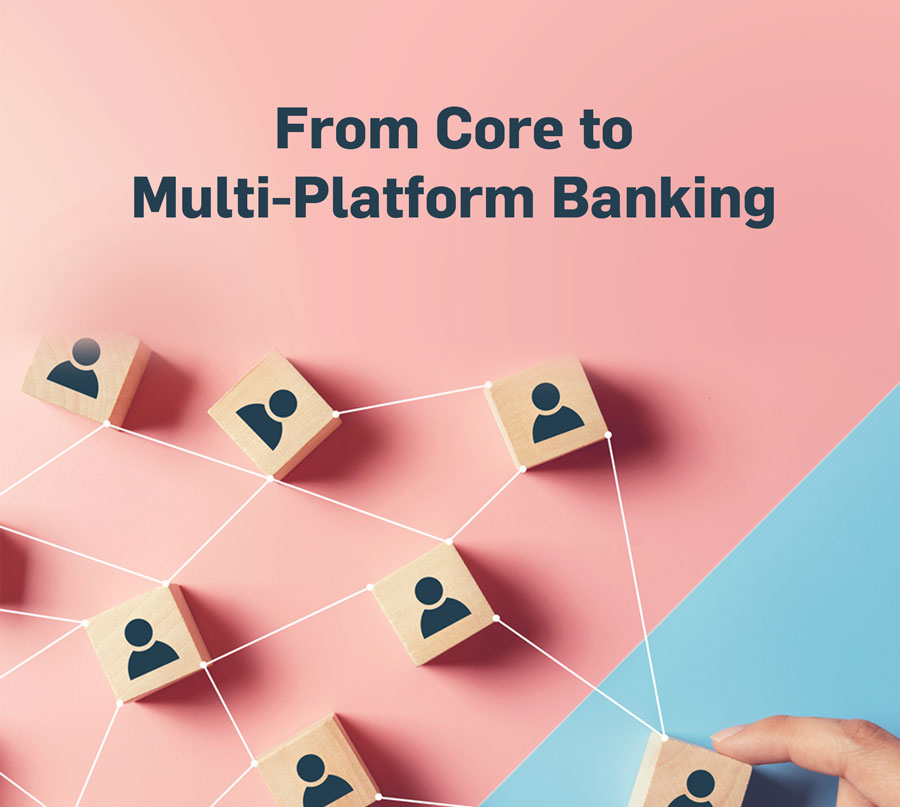


Banks looking to offer distinctive digital experiences need to decouple their APIs from their banking platforms
Digital Banking platforms now abound. In fact, platform providers are already in the next phase of their digital positioning – multiple product lines. Temenos for example offers Transact and Infinity, which distinguishes between their backend and frontend capabilities. Similarly, FIS offers two platforms – Modern Banking and Horizon – which separates out their top-tier and mid-tier market capabilities.
These distinct product lines are in part a reaction to how banks are implementing digital transformation. No longer reliant on a single, monolithic make-or-break system costing tens of millions of dollars, these days banks have the option to mix and match components.
Platform diversification
There are of course many advantages to this more diversified approach, not least, the prospect of easy customization. Everyone knows change requests are a necessary, expensive and extremely time consuming aspect of adopting a new core banking system.
It is no wonder therefore that a lego block-based system, whether from the same or different providers, has significant appeal. This is especially the case given the shift in the banking battleground from great branch services to market-leading digital experiences.
No single integration solution
Yet, despite this trend, the glue needed to integrate all these separate components remains elusive. Bank CIOs are still having to rely on an array of sticking plasters created by different internal teams, rather than a single integration solution. But as we enter the era of multi-data, API-first approaches to banking, these plasters will invariably come loose.
This is because system integration in today’s world goes well beyond the ETL-like ability to connect to many systems of record, or a datamart-like ability to store data. While these play a role, they must ultimately result in an API services layer that supports a variety of digital applications.

API Decoupling
This means that a bank should not rely on its product platforms to provide the APIs needed to drive digital experiences. Instead, to offer a truly comprehensive Customer 360, these APIs must necessarily be decoupled from individual platforms and made usable across all.
To do this, a bank’s architecture should include what Gartner refers to as a Digital Integration Hub (DIH). According to Gartner, a DIH comprises an independent integration, data management and API services layer. They suggest that together, these can “turbocharge” API platforms and add value to businesses by enabling analytics. However, Gartner admits that “DIH industry experience is still limited, and comprehensive products are few….”
Emerging Use Cases
That said, the emergence of the new banking use cases, fueled by Covid, point to a sustained increase in demand for such architecture:
- Post-Covid customer onboarding and account opening experiences that are at least 50% faster and easier than current standards.
- Responsive customer analytics that reflect their immediate location, spending and consumer needs
- Comprehensive domain engagement across channels, merchants and third party data providers
- Parallel and/or partial upgrades from legacy to modern digital banking platforms, while ensuring all new and old data remains online and usable
- Cost efficiencies derived from relieving systems of their existing data management, API creation, and storage costs.

Hybrid Deployment
Over the next few months and years, banks will be scrambling to support their many digital applications across their many systems of record. The last thing banks want is to have to revise all these applications and APIs every time they make a change to any of these systems.
A DIH plays the role of abstracting data from its source. It ensures that bank’s digital applications can be real time, always-on, and super-fast, with no dependency on any specific platform, modern or otherwise.
The TWINN is the world’s first digital twin designed specifically for banking. It powers Banking APIs by creating a real time integration hub for financial services data and logic.
This enables banks to implement highly customizable customer experiences that are independent of their core product systems.
